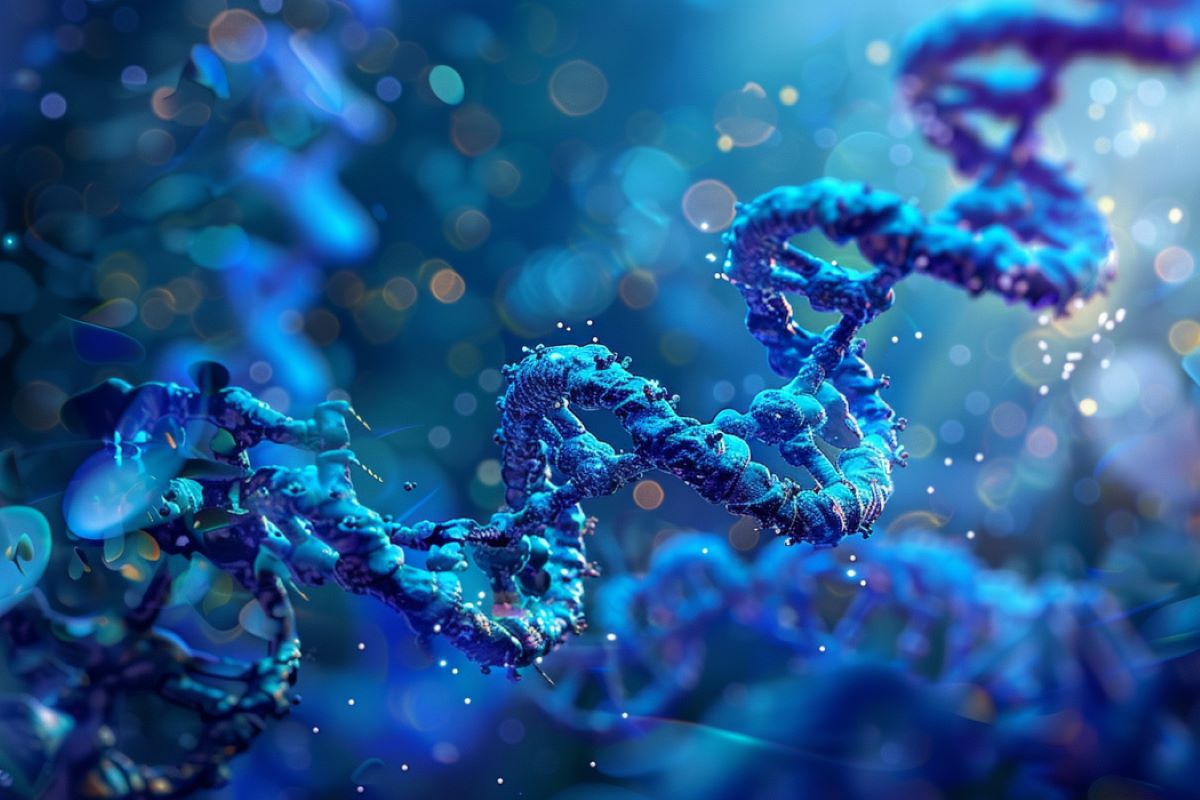Summary: Researchers identified unique molecular markers of blood-brain barrier dysfunction in Alzheimer’s disease. They discovered altered communication between brain vascular cells mediated by VEGFA and SMAD3 molecules. These findings may lead to new diagnostic biomarkers and treatment options for Alzheimer’s.
Key facts:
- VEGFA and SMAD3 play a crucial role in the integrity of the blood-brain barrier.
- Alzheimer’s samples showed disruption of cell communication in the vascular cells of the brain.
- Higher levels of SMAD3 in the blood are associated with better Alzheimer’s outcomes.
Source: Mayo Clinic
The blood-brain barrier – a network of blood vessels and tissues that nourishes and protects the brain from harmful substances circulating in the blood – is disrupted in Alzheimer’s disease.
Now, researchers at the Mayo Clinic and colleagues have discovered unique molecular markers of blood-brain barrier dysfunction that may point to new ways to diagnose and treat the disease.
Their findings are published in Nature Communications.

“These signatures have high potential to become novel biomarkers that capture brain changes in Alzheimer’s disease,” says senior author Nilüfer Ertekin-Taner, MD, Ph.D., chair of the Department of Neuroscience at Mayo Clinic. and head of Alzheimer’s Genetics. Disease and Endophenotype Laboratory at the Mayo Clinic in Florida.
To conduct the study, the research team analyzed human brain tissue from the Mayo Clinic Brain Bank, as well as published datasets and brain tissue samples from collaborating institutions. The study group included brain tissue samples from 12 patients with Alzheimer’s disease and 12 healthy patients without confirmed Alzheimer’s disease.
All participants had donated their tissue for science. Using these and external data sets, the team analyzed thousands of cells in more than six brain regions, making this one of the most rigorous studies of the blood-brain barrier in Alzheimer’s disease to date, according to the researchers.
They focused on brain vascular cells, which make up a small proportion of cell types in the brain, to examine the molecular changes associated with Alzheimer’s disease. In particular, they looked at two types of cells that play an important role in maintaining the blood-brain barrier: pericytes, the brain’s sentinels that maintain the integrity of blood vessels, and their supporting cells known as astrocytes, to determine whether and how they interact.
They found that samples from Alzheimer’s patients exhibited altered communication between these cells, mediated by a pair of molecules known as VEGFA, which stimulates blood vessel growth, and SMAD3, which plays a key role in cellular responses to the environment. external. Using cell and zebrafish models, the researchers confirmed their finding that increased levels of VEGFA lead to lower levels of SMAD3 in the brain.
The team used stem cells from blood and skin samples from Alzheimer’s disease patient donors and those in a control group. They treated the cells with VEGFA to see how it affected SMAD3 levels and overall vascular health. VEGFA treatment caused a decrease in SMAD3 levels in brain pericytes, indicating interaction between these molecules.
Donors with higher blood levels of SMAD3 had less vascular damage and better outcomes associated with Alzheimer’s disease, according to the researchers. The team says more research is needed to determine how SMAD3 levels in the brain affect SMAD3 levels in the blood.
The researchers plan to further study the SMAD3 molecule and its vascular and neurodegenerative outcomes for Alzheimer’s disease and also search for other molecules with possible involvement in maintaining the blood-brain barrier.
This research is part of a federal grant supporting projects that identify targets for the treatment of Alzheimer’s disease. The study was supported in part by the National Institutes of Health, the National Institute on Aging, the Alzheimer’s Association Zenith Fellows Award, and the Mayo Clinic Center for Regenerative Biotherapeutics.
About this news about Alzheimer’s disease research
Author: Megan Luihn
Source: Mayo Clinic
Contact: Megan Luihn – Mayo Clinic
Image: Image is credited to Neuroscience News
Original research: Open access.
“Gliovascular transcriptional disturbances in Alzheimer’s disease reveal molecular mechanisms of blood-brain barrier dysfunction” by Nilüfer Ertekin-Taner et al. Nature Communications
ABSTRACT
Gliovascular transcriptional disturbances in Alzheimer’s disease reveal molecular mechanisms of blood-brain barrier dysfunction
To uncover the molecular changes underlying blood-brain barrier dysfunction in Alzheimer’s disease, we performed single nuclear RNA sequencing in 24 Alzheimer’s disease brains and focused on vascular clusters and astrocytes as the main types of blood-brain-unit barrier glioma cells.
Most vascular transcriptional changes were in pericytes. Of the vascular molecular targets predicted to interact with astrocytic ligands, SMAD3upregulated in Alzheimer’s disease pericytes, has the highest number of ligands incl VEGFAsitting down in Alzheimer’s disease astrocytes.
We validated these findings with external datasets comprising 4,730 pericyte nuclei and 150,664 astrocyte nuclei. Blood SMAD3 levels are associated with neuroimaging outcomes associated with Alzheimer’s disease. We determined the inverse relationships between pericytic SMAD3 and astrocytic VEGFA in human and zebrafish iPSC models.
Here, we detect major transcriptional changes in Alzheimer’s disease in the gliovascular unit, favoring the perturbed pericyte SMAD3– astrocytic VEGFA interactions, and validate them in cross-species models to provide a molecular mechanism of blood-brain barrier breakdown in Alzheimer’s disease.
#molecular #signatures #Alzheimers #disease #Neuroscience #News
Image Source : neurosciencenews.com
